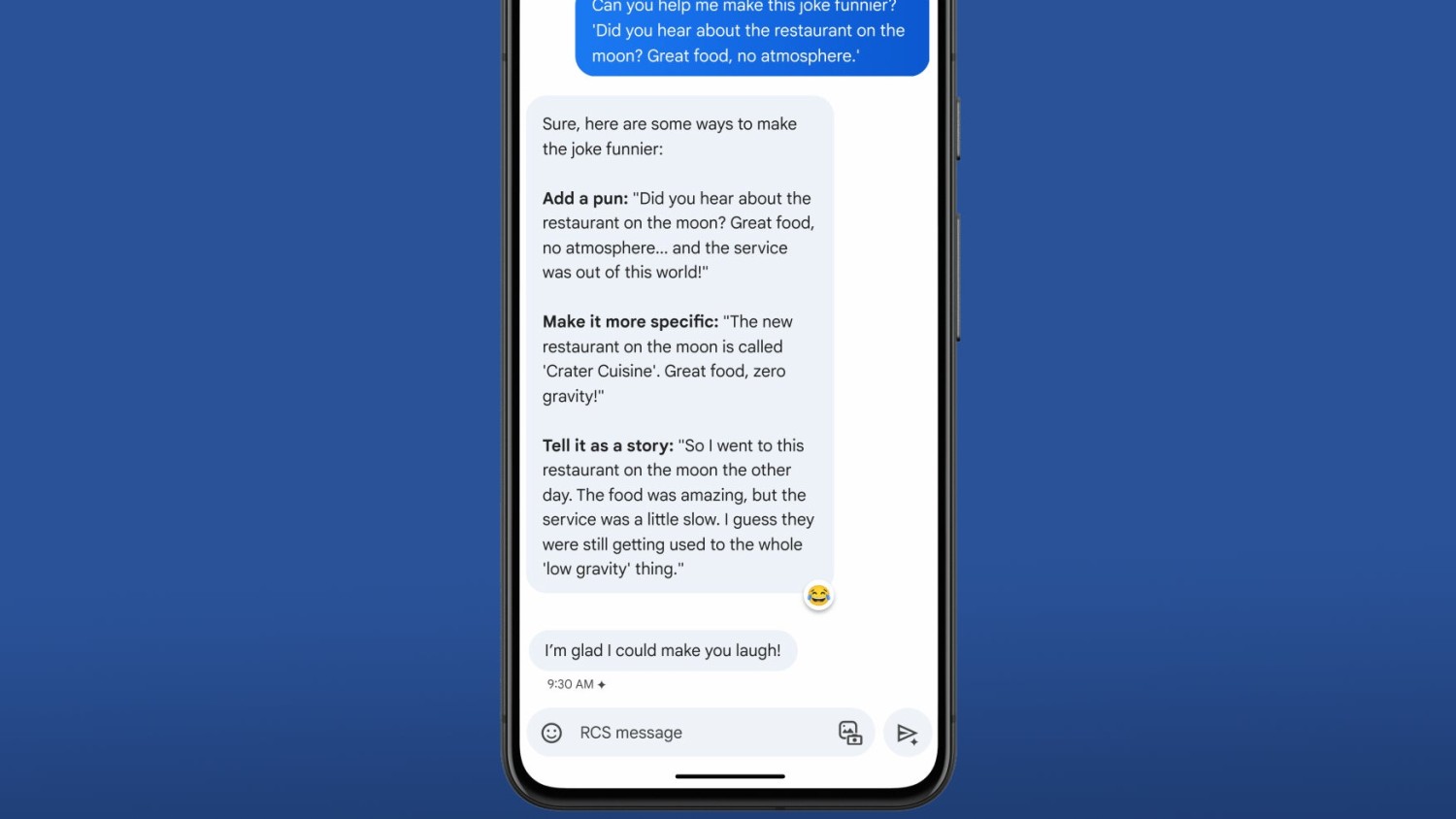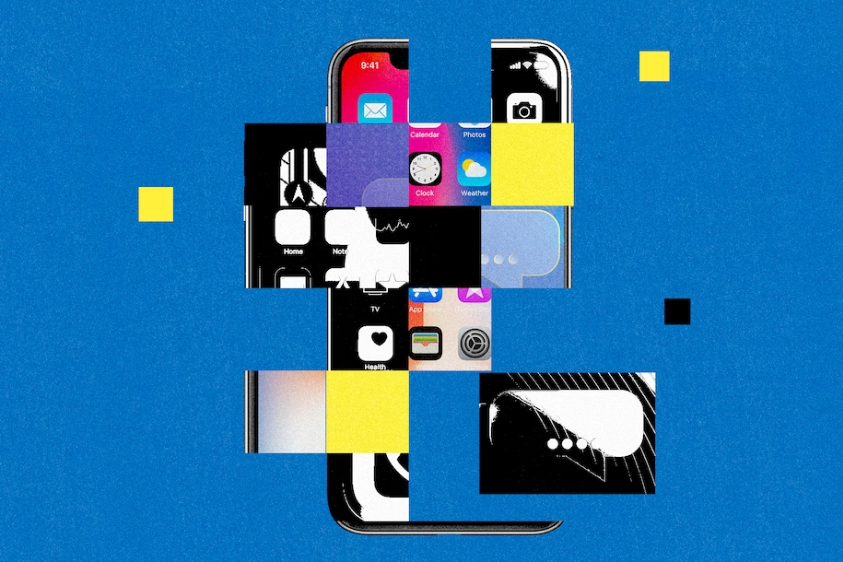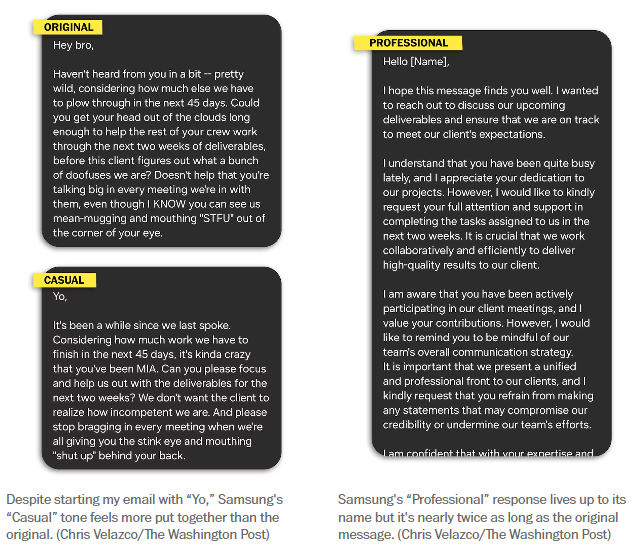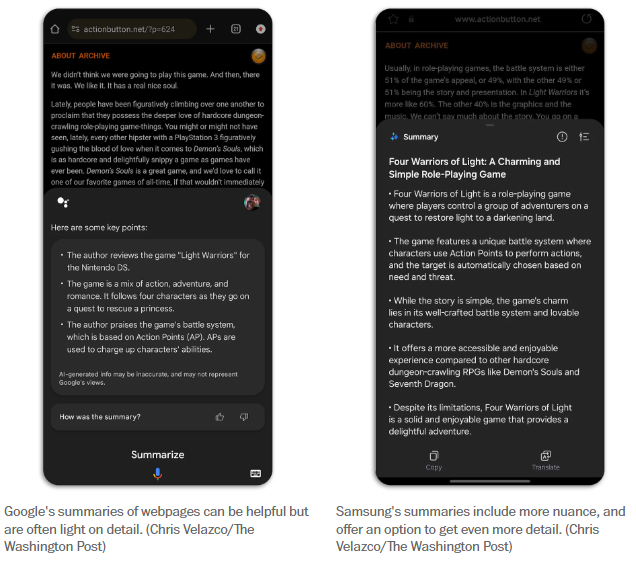
This article is more than
1 year oldPhones are getting packed with AI features. But how helpful are they?

Every year like clockwork, some of the biggest companies in the world release new phones they hope you will shell out hundreds of dollars for.
And more and more, they are leaning on a new angle to get you thinking of upgrading: artificial intelligence.
Smartphones from Google and Samsung come with features to help you skim through long swaths of text, tweak the way you sound in messages, and make your photos more eye-catching. Meanwhile, Apple is reportedly racing to build AI tools and features it hopes to include in an upcoming version of its iOS software, which will launch alongside the company’s new iPhones later this year.
But here's the real question: Of the AI tools built into phones right now, how many of them are actually useful?
That’s tough to say: It all depends on what you use your phone for, and what you personally perceive is helpful. To help, here’s a brief guide to the AI features you’ll most commonly find in phones right now, so you can decide which might be worth living with for yourself.
AI gadgets will be hot in 2024. You don’t need one.
Editing your photos
For years, smartphone makers have worked to make the photos that come out of the tiny camera sensors they use look better than they should. Now, they’re also giving us the tools to more easily revise those images.
Here are the most basic: Google and Samsung phones now let you resize, move or erase people and objects inside photos you’ve taken. Once you do that, the phones lean on generative AI to fill in the visual gaps left behind — and that’s it.
Think of it as a little Photoshopping, except the hard work is basically done for you. And for better or worse, there are limits to what it can do.
You can’t use those built-in tools to generate people, objects or more fantastical additions that weren’t part of the original image the way you can with other AI image creation tools. The results don’t usually survive serious scrutiny, either — it’s not hard to see places where little details don’t line up, or areas that look smudgy because the AI couldn’t convincingly fill a gap where an offending object used to be.
What’s potentially more unsettling are tools such as Google’s Best Take for its Pixel phones, which give you the chance to select specific expressions for people’s faces in an image if you’ve taken a bunch of photos in a row.
Some people don’t mind it, while others find it a little divorced from reality. No matter where you land, though, expect your photos to get a lot of AI attention the next time you buy a phone.
Tweaking your tone
Your messages to your boss probably shouldn’t sound like messages to your friends — and vice versa. Samsung’s Chat Assist and Google’s Magic Compose tools use generative AI to try to adjust the language in your messages to make them more palatable.
The catch? Google’s Magic Compose only works in its texting-focused Messages app, which means you can’t easily use it for emails or, say, WhatsApp messages. (A similar tool for Gmail and the Chrome web browser, called Help Me Write, is not yet widely available.) People who buy Galaxy S24 phones, meanwhile, can use Samsung’s version of this feature wherever they write text to switch between professional, casual, polite, and even emoji-filled variations of their original message.
What can I say? It works, though I can’t imagine using it with any regularity. And in some ways, Samsung’s Chat Assist tool backs down when it’s arguably needed most. In a few test emails where I used some very mild swears to allude to (fictional) workplace stress, Samsung’s Chat Assist refused to help on the grounds that the messages contained “inappropriate language.”

Transcribing your recordings
The built-in voice recorder apps on Google’s Pixels and Samsung’s latest phones don’t just record audio — they’ll turn those recordings into full-blown transcripts.In theory, this should free you up from having to take so many notes while you’re in a meeting or a lecture. And for the most part, these features work well enough — after a few seconds, they’ll dutifully produce readable, if sometimes clumsy, readouts of what you’ve just heard.
If all you need is a sort of rough draft to accompany your recordings, these automated transcription tools can be really helpful. They can differentiate between multiple speakers, which is handy when you need to skim through a conversation later. And Google’s version will even give you a live transcription, which can be nice if you’re the sort of person who keeps subtitles on all the time.
But whether you’re using a Google phone or one of Samsung’s, the resulting transcripts often need a bit of cleanup — that means you’ll need to do a little extra work before you copy and paste the results into something important.
Summarizing what you see
Who among us hasn’t clicked into a Wikipedia page, or an article, or a recipe online that takes way too long to get to the point? As long as you’re using the Chrome browser, Google’s Pixel phones can scan those long webpages and boil them down into a set of high-level blurbs to give you the gist.
Sadly, Google’s summaries are often too cursory to feel satisfying.
Samsung’s phones can summarize your notes and transcriptions of your recordings, but it will only summarize things you find on the web if you use its homemade web browser. Honestly, that might be worth it: The quality of its summaries are much better than Google’s. (You even have the option of switching to a more detailed version of the AI summary, which Google doesn’t offer at all.)
Both versions of these summary tools come with a notable caveat, too: They won’t summarize articles from websites that have paywalls, which includes just about every major U.S. newspaper.

Will they cost me anything to use?
Samsung’s AI tools are free for now, but a tiny footnote on its website suggests the company may eventually charge customers to use them. It’s not a done deal yet, but Samsung isn’t ruling it out either.
“We are committed to making Galaxy AI features available to as many of our users as possible,” a spokesperson said in a statement. “We will not be considering any changes to that direction before the end of 2025.”
Google, meanwhile, already makes some of its AI-powered features exclusive to certain devices. (For example: A Video Boost tool for improving the look of your footage is only available on the company’s higher-end Pixel 8 Pro phones.)
In the past, Google has made experimental versions of some AI tools — like the Magic Compose feature — available only to people who pay for the company’s Google One subscription service. And more recently, Google has started charging people for access to its latest AI chatbot. For now, though, the company hasn’t said anything either way about putting future AI phone features behind a paywall.
Google did not immediately respond to a request for comment.